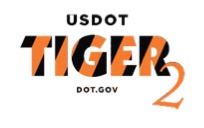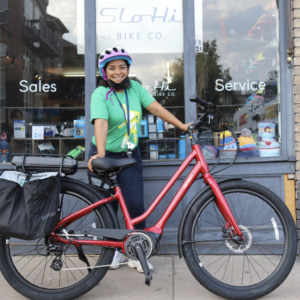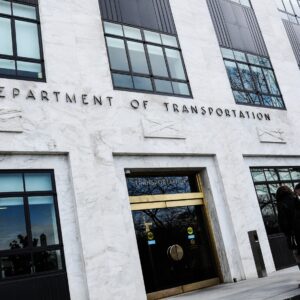
This morning the U.S. Department of Transportation released a full list of award announcements for their TIGER II grants. More than 70 projects — split between 42 capital construction projects and 33 planning projects — worth $600 million were funded.
Oregon received three grant awards, two for construction projects and one for planning.
Washington County nabbed $1.5 million for their “Livable Community Plan” (total cost $3.065 million) that will help the region plan for upcoming growth — and will include a biking and walking plan — in Aloha (“unincorporated urban area between Hillsboro and Beaverton”). Here’s more from the USDOT project description:
The Livable Community Plan will allow for strategic corridor and town center economic development; land use and streetscape improvements; a bicycle and pedestrian plan; and a housing equity and opportunity strategy in the unincorporated urban area of Washington County between Hillsboro and Beaverton. The plan will investigate causes and develop strategies to stop economic and physical decline in the under-invested area between the fifth and sixth largest cities in Oregon.
The USDOT also decided to pump $2 million into Oregon’s statewide “Electric Vehicle Corridor” plan. That $4.6 million project was submitted by the Oregon Department of Transportation. According to the USDOT, the grant will help install 42 e-car charging stations for the length I-5 in Oregon with gaps not exceeding 50 miles.
The big winner in Oregon in terms of TIGER II grant dollar amount is the Coos Bay Rail Line Rehabilitation Project. That project, applied for by the Port of Coos Bay, won $13.5 million (total project cost is $14.5 million). The money will help rehab the track structure of the 133-mile Coos Bay Rail Link which closed in 2007 as a result of deferred maintenance.
In the first round of TIGER grants, Portland’s regional government, Metro applied for a $38 million N/NE Portland bike network demonstration project. That grant was not awarded. This time around, Metro and a host of regional partners applied for $13.2 million that would have helped them build a slew of biking and walking facilities in Southeast Portland in conjuction with the Portland-Milwaukie Light Rail Line. Today’s announcement means that project was also not funded.
There is not expected to be a TIGER III.
Read more about the TIGER grant program in the USDOT press release. Download a PDF of the complete list of capital grant recipients here. Download a PDF of a complete list of planning grant recipients here.






Thanks for reading.
BikePortland has served this community with independent community journalism since 2005. We rely on subscriptions from readers like you to survive. Your financial support is vital in keeping this valuable resource alive and well.
Please subscribe today to strengthen and expand our work.
I’d be interested to hear if any impressive bike projects elsewhere received major funding.
So, does that mean Metro’s newest application was also shot down? The article doesn’t make that clear.
Bummer to see that the Metro proposal did not make the cut. We could have used those improvements.
Correct. No SE Corridor funding from this. Applications far exceeded the size of the program just like the last cycle of TIGER. There is huge pent up demand for these innovative multimodal projects, and federal policy needs to be reformed so more of these types of projects can be funded.
I’m wondering the same thing… makes it seem like the newest application will go through in the next round…
Oh look electric cars are taking money that ought to go to alternative transportation solutions. Cars are cars and the problems they generate have to do with how much space they take up and the damage they do to roads, not how (allegedly) pollution free they are. This is a terrible development that, hopefully, bike activists will push back against, hard.
I understand the electric cars can have a slow charge or a fast charge. The fast charge damages the batteries. If you want to go somewhere (crater lake?) you can drive for something like 75 miles do a long slow charge then go 75 more miles…. It sounds like a bicycle would be faster.
It’s too bad they want to close down the boardman coal plant, we could use the power. The coal we aren’t going to burn will be shipped to China so they can have power there, and still make smoke in the air.
@6 thanks for making that point.
on the one hand we get massive tax breaks and subsidies for e-cars and on the other bus route cutbacks.
it seems to me that obtaining active transport grants is not a major priority for our distracted city leadership. i want “build it” to be more than a slogan. its time to stop flitting around to international conferences and invest in our community in innovative ways.
Re: electric cars.
Electric cars are a step in reducing and eliminating the use of cars.
You’re not going to be able to force enough people to give up their cars through direct energy costs. You have to make the area like Manhattan: people have to think it is their idea.
If the area streets are all but impassible by car, it is excessively expensive to park and lots of time is wasted then people will willingly stop driving there.
Our century long expansion of sub-urban growth anchors the long range ICE car in our list of “needs” and “wants”. As more people have cheap short range electric cars density will increase encouraging less use of longer range vehicles. This will lead to less sprawl and better dense urban planning which will further perpetuate the cycle of tightening our cities back to economically supportable footprints.
This process will likely be slow; on the order of 25-50 years.
In the mean time I think the politicians are only thinking of “jobs first”.
Regarding electric cars and the short-range/slow charging barrier to entry:
There is a simple solution (not my idea, but I can’t recall where I heard it first). The key is to not change the driver’s experience when driving an electric car because people are slow to change. Instead build electric car infrastructure in a way that means behavior does not need to change.
Specifically, you drive your electric car until the batteries are low. You pull into a ‘refill station’ where some automated mechanism pulls out your drained batteries and replaces them with charged ones. You pay for the refill and drive away. Hours later, someone else gets your batteries which have been recharged.
Added benefits:
Charging stations are more centralized than everyone charging at home. This means way less energy wasted on transmission.
As batteries reach the end of their life cycle, they are simply taken out of circulation, and replaced with new and probably more efficient batteries.
@q`Tzal
It’s certainly one viewpoint on e-cars. However, I see e-cars getting the same sort of massive subsidies that have helped perpetuate the car culture. How does cheap electricity lead to reduced trips? It doesn’t. Especially if pols make a huge effort to install enough charging stations. If a car has a reliable 75 mile radius it really does nothing to reduce sprawl at all. Instead the way to discourage drivers is to shift more of the true cost of driving on to them. (Or extending the tax credits to bikes.)
Essentially the things you’re talking about in terms of contatining sprawl have nothing to do with e-cars, but larger land use plans. And there are plenty of funding mechanisms for cars already. E cars worry me because they seem like an easy out for pols to be “green” while at the same time doing the lazy thing. I do hope you’re right, of course.
hi folks,
thanks for all the comments. I turned this story around in about 20 mins before I had to be on a panel at Railvolution conference and I didn’t complete my paragraph about Metro’s SE Corridor Project. I’ve updated the story to say that this announcements means that Metro/Partners will not get their project funded. sorry that was not initially clear.
#11 Andrew
I agree in theory.
A lot of what I portend depends on driver psychology; in that no one wants to be stranded and dependent on someone else to be able to get where they need to go.
So while a 100, 75 or even 30 mile range may be perfectly doable most drivers they won’t feel comfortable unless they are certain that they can get their (insert energy source here) and get home.
By dint of the current state of the technology of electrical energy storage and the almost complete lack of an electric car recharging infrastructure, compared to the petro refueling infrastructure, auto drivers will continue to be afraid to stray to far away from urban areas.
My particular angle is to undermine every little convenience that gives the modern American auto system staying power. If some of those things are esoteric psychological underpinnings so be it.
Are you willing to build a new nuclear plant in Oregon to provide power for electric cars?
I’m assuming that the area between Beaverton and Hillsboro is Aloha. Huge potential for a bike network since its relatively flat and has a grid street pattern for most of it.
Anyone know if the actual grant applications are available online somewhere? I’d love to read more about what the projects will involve.